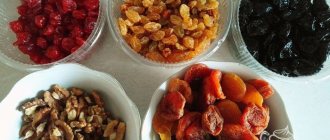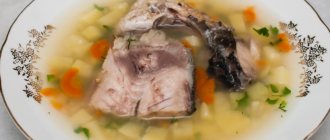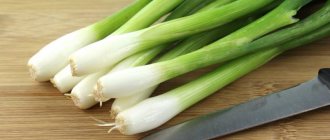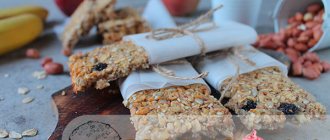If you think that crap is a word that is often used colloquially to describe an object or event for which they cannot come up with or do not know a name, then you are deeply mistaken. We will talk about horseradish as a hot and piquant seasoning, served mainly with meat and fish dishes. This will be interesting for those who cannot imagine their life without spicy dishes, but in no case want to gain extra pounds.
And before we tell you how many calories there are in horseradish, let's figure out what it is and what it is made from.
Horseradish with variations
This spicy seasoning, or rather even the sauce, is called as follows: Hrenoten, Derigorlo, Vyrviglaz, Ogonyok, Kobrochka, live adjika. And this is not a complete list of names. But the essence is this - they make it based on horseradish with various additives.
- With fresh or boiled beets. Moreover, if fresh beets are added, then mostly juice. And from boiled one you can make both a hot seasoning and a rather gentle one - it all depends on the amount of vegetable.
- With tomatoes. There are also options: either with red ones, or half with green ones. The taste is different, as is the spiciness.
- You can also add sweet pepper, which will add a special piquancy and a pleasant aftertaste.
- With apples, plums, carrots - the heat of the seasoning and its taste depend on these ingredients.
Garlic is added to all these horseradish recipes (except beetroot). And in everything, without exception, salt, sugar, vinegar and spices if desired.
Horseradish with garlic and tomatoes. Recipe
The main secret of this recipe is that only fresh ingredients are used here. There is no need to cook or sterilize anything.
To prepare this delicious snack we will need the following ingredients:
- Tomatoes - 2 kg.
- Garlic – 150 g.
- Horseradish root – 350 g.
- Salt – 15 gm.
- Sugar – 10 g.
Based on this amount, we will get 2 liters of horseradish.
We start by peeling the tomatoes, removing all excess from them, peeling the horseradish and garlic
After this, place all the peeled products in a blender (if you don’t have one, you can use a meat grinder).
Mix everything thoroughly until a homogeneous mass is obtained.
Add salt and sugar to taste. Pour the prepared snack into jars and place in the refrigerator. That's it, our dish is ready. It is advisable to let it brew for a day and then you can consume it. And it can be stored in this form for quite a long time.
Useful properties of horseradish
The pungent substances that this seasoning is rich in thanks to horseradish have an almost “life-giving” effect on the body.
It is precisely because of the essential components, flavonoids, phytoncides and the record content of vitamin C that horseradish has a strong antibacterial effect. That is why it copes well with colds and viral diseases, as well as gastrointestinal infections.
Important to remember! Horseradish is not used as a primary medicine, but as a prophylactic. In case of illness, as an auxiliary tasty addition to medications, but only after the approval of a doctor, since with enteroviruses, taking horseradish may be unjustified due to damage to the gastrointestinal mucosa by microbial flora.
Horseradish helps stimulate appetite and stimulate the gastrointestinal tract. The separation of gastric juice, intestinal motility, liver and gall bladder function improves.
Horseradish’s ability to cleanse the blood and have a beneficial effect on bone marrow function, which helps increase hemoglobin levels, has long been known.
Kidney function improves, which helps cleanse the body of toxins that are excreted through urine.
When eating horseradish, there is a decrease in blood sugar levels, as well as a decrease in cholesterol levels.
To prevent the horseradish from souring and fermenting...
To prevent horseradish from souring and delight you with its taste, do not forget that it must be stored exclusively in the refrigerator. Then you can avoid the appearance of mold.
The jars must be thoroughly sterilized, and the plastic lids must be washed well and, preferably, boiled. Then you won't have to add additional preservatives such as vinegar, aspirin or citric acid.
Remember, the following causes the product to sour:
- No pre-sterilization of jars.
- Lack of natural preservatives such as garlic or salt.
- Products that are spoiled or have slight flaws.
- Storing the finished product in a warm place.
Nylon lids are best suited for long-term storage of snacks in glass jars. Well, if you will store it in glass containers for a long time and use screw caps, then it is advisable to put several layers of cellophane under them. This will reduce air getting into the jar.
Here are some helpful tips to help you prepare your horseradish appetizer.
- Horseradish roots must be of high quality, without any damage. It is better to use a late harvest. Then the taste will be richer and stronger. Appetizers prepared in the fall last the longest.
- It is necessary to properly preserve the root. It is advisable to dig it up immediately before preparing horseradish.
- To prevent horseradish from irritating the eyes while preparing the appetizer, you can cover the meat grinder with a plastic bag.
- If you want to get your own unforgettable taste, don't be afraid to experiment. If you want to add sourness to horseradish, use an apple or gooseberry. Different types of peppers also provide good variety of taste sensations.
- If you use dried root when preparing a snack, then you must first peel it, chop it, then dry it in the oven and finally grind it in a coffee grinder. After this, arrange it in glass jars and store it until needed.
We recommend reading: Horseradish Crackers From the Store
In general, get creative, come up with your own options and bon appetit!
Now we take the prepared jars: well washed and sterilized. Place the prepared sauce in them and put them in the refrigerator.
And now about calories
There are certainly calories in horseradish. But, given the fact that horseradish helps speed up the digestion process and prevents excess fats from remaining in the body, the seasoning is useful when eating fatty meat foods, since excess calories will be “burned out” from it.
The calorie content of horseradish without any additional vegetables (only garlic or even without it) is about 63 kcal per 100 grams. product. But the calorie content of horseradish with tomatoes will be lower - 34 kcal per 100 g. seasonings But the taste and color are amazing. In addition, with the help of tomatoes and spices, you can adjust the spiciness of the finished dish.
And finally, let’s reveal a small but very important secret. The more freshly prepared the sauce, the stronger the beneficial properties of horseradish. And they are preserved almost 100% for 3-4 weeks after preparation. That’s why leading chefs and nutritionists recommend storing horseradish root for the winter and seasoning it as needed.
Horseradish for the winter according to a classic recipe with garlic, tomatoes and without tomatoes
Not a single holiday, not a single feast is complete without a snack.
There are so many different versions of the traditional holiday dish that listing them would take a lot of time. However, among them there are those who take first place. Horseradish made from tomatoes with horseradish and garlic, or simply “horseradish”, can undoubtedly be called such. And today, we will look at real Old Russian recipes. The most common products are used here, and the taste is wonderful, rich in pungency.
Despite the fact that the ingredients for preparing this dish are standard, there are many recipes for it. However, this is due to the fact that everyone who prepares this appetizer, one way or another, adds something special to it. The result is a wonderful snack. which will delight all lovers of spicy food.
Cooking methods
Horseradish leaves and roots are used for food. A seasoning is prepared from the root, which perfectly complements hot and cold dishes of meat, poultry and fish. It goes especially well with aspic and aspic. All over the world this seasoning is called Russian, and is added to dishes if they want to give them a special, Russian flavor. There are several ways to prepare this seasoning. The most common in Russia is without the use of vinegar, which allows you to highlight the natural spiciness of the product and make the seasoning more piquant, but does not allow it to be stored for a long time (no more than 2 days). The Polish method contains vinegar and makes the horseradish less spicy, but it can be stored for a long time. In Transcaucasian cuisine, beetroot juice is added to the grated root, which gives it a beautiful rich shade. Grated horseradish is added to various sauces. The raw root is sometimes added to vegetable salads and soups, mostly cold. To soften the spiciness, the seasoning is made with sour cream, cream or yogurt. There are recipes for kvass and alcoholic drinks with horseradish added. Horseradish is widely known - a tincture of grated horseradish in vodka.
Horseradish leaves are added to vegetable salads and cold soups, for example, okroshka, kholodnik or beet soup. Widely used in marinades and when pickling vegetables for the winter. In addition to an interesting taste, they preserve preservation from harmful microbes and fungi.
How to keep it fresh
How to ensure that the sauce prepared without heat treatment does not sour for as long as possible? Here are five rules of experienced housewives.
- Increase the proportions of horseradish and garlic. The more of these products in the sauce, the longer it will be stored.
- Introduce natural preservatives. Adding lemon juice or vinegar to the preparation will extend its shelf life.
- Use the cold marinating method. Grind 1 kg of garlic, tomatoes, hot peppers, and large horseradish root with a meat grinder. Stir in 200 ml apple cider vinegar and salt to taste. Marinate for 12 hours, place in glass jars, close, but do not roll up.
- Cover with a “protective disk”. Cut a circle out of wax paper that is the same size as the diameter of the jar, soak it in alcohol or vodka, place it on the workpiece, and close it with a lid.
- To freeze. Pack the sauce into small bags or plastic bottles and place in the freezer.
Some housewives add one crushed aspirin tablet (per liter of horseradish) to the preparation in order to increase shelf life. However, administering the medicine may be unsafe, so you should not do this, especially since horseradish itself has pronounced antiseptic properties.
You can prepare horseradish with a twist by adding cloves, oregano, basil, cinnamon or chopped fresh herbs. Serve the sauce with homemade dumplings, meat and chicken, boiled potatoes, or simply spread on a slice of rye bread.
How to make horseradish with butter
- red tomatoes – 1 kg
- garlic – 100 g
- horseradish root – 200 g
- salt - to taste
- vegetable oil
Making horseradish at home:
1. Wash the tomatoes and cut into small pieces.
2. Peel and chop the horseradish in a blender or grind through a meat grinder along with the tomatoes.
3. Squeeze the peeled garlic cloves through a garlic press.
4. Mix all the vegetables together, adding salt to taste.
5. Pour the resulting mass into a sterilized jar, pour a small layer of oil on top and close with a nylon lid.
Put the horseradish in the refrigerator and serve it with any dishes - vegetables, meat as a hot sauce.
Horseradish with beets
You will need:
- 1 kg beets;
- 0.5 kg horseradish;
- 200 g water;
- 100 g sunflower oil;
- 50 g each of sugar and salt;
- bay leaf – 2-3 pcs;
- black peppercorns – 5-6 peas;
- 50 g vinegar;
- cloves to taste.
The recipe preparation steps are as follows:
- The beets are washed, peeled and boiled until tender.
- Grate on a fine grater.
- Horseradish rhizomes are soaked for a day, peeled and crushed.
- Prepare a marinade from all the remaining ingredients; after the water boils, add vinegar and set aside.
- Mix beets, horseradish and marinade in a separate container.
- Mix and distribute into small sterile jars.
- Sterilize for about 15 minutes and roll up.
Benefit
Both the root and leaves of horseradish have beneficial properties. The root has long been used as a bactericidal and anti-inflammatory agent for colds. Horseradish acts on the body as a stimulant, on all systems and organs. With proper and not excessive use, appetite improves, the acidity of gastric juice increases, blood sugar levels and blood pressure decrease. Horseradish gives a diuretic and choleretic effect, increases male potency, strengthens the immune system, and enhances hematopoiesis. A tincture of the ground root is used externally to remove freckles, as a disinfectant for bruises and abrasions, dermatitis and fungal diseases of the skin. It can also be used as a warming agent for rheumatism, sciatica, neuralgia, hypothermia, etc.
Read also: Film lace with Glafira Tarkhanova
It should be remembered that only freshly grated root has beneficial properties; after two or three days it loses its medicinal properties. Canned horseradish is only suitable as a seasoning for food.
Horseradish leaves also have beneficial properties. They are used as an expectorant, for colds and ARVI, for vitamin deficiencies and for general improvement of well-being.
Attention! Horseradish can be consumed in moderation, otherwise it can cause high blood pressure, stomach pain and even bleeding.
Horseradish is not recommended:
for chronic gastrointestinal diseases;
for gastrointestinal diseases accompanied by high acidity;
for liver diseases;
for kidney diseases;
people prone to allergic reactions;
pregnant and breastfeeding women.









